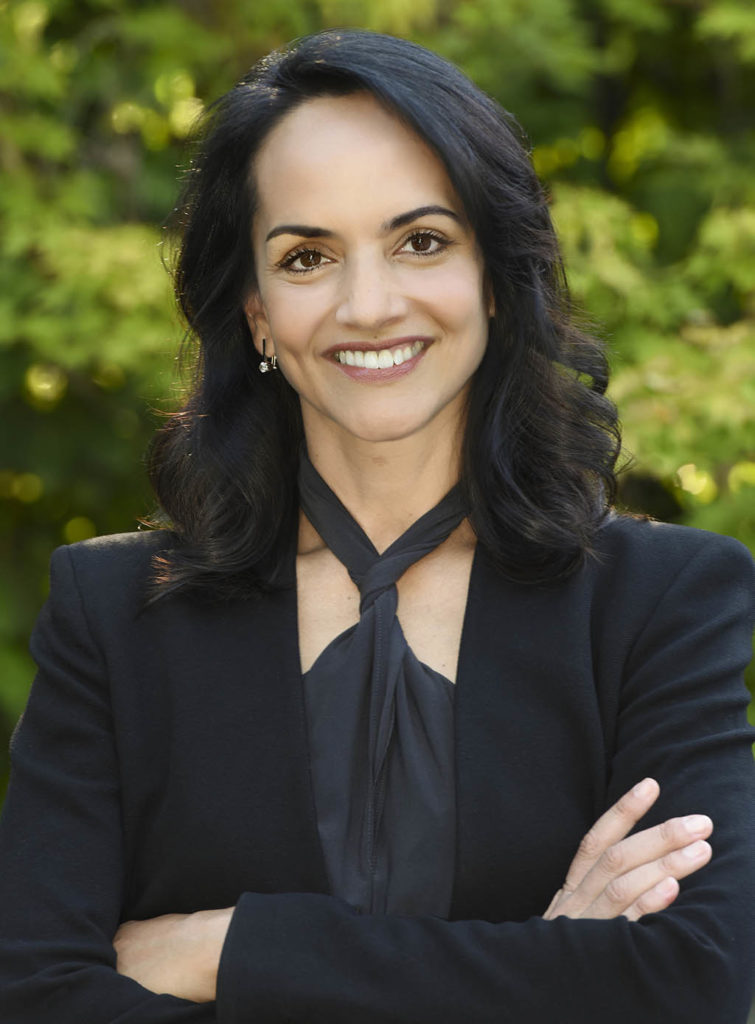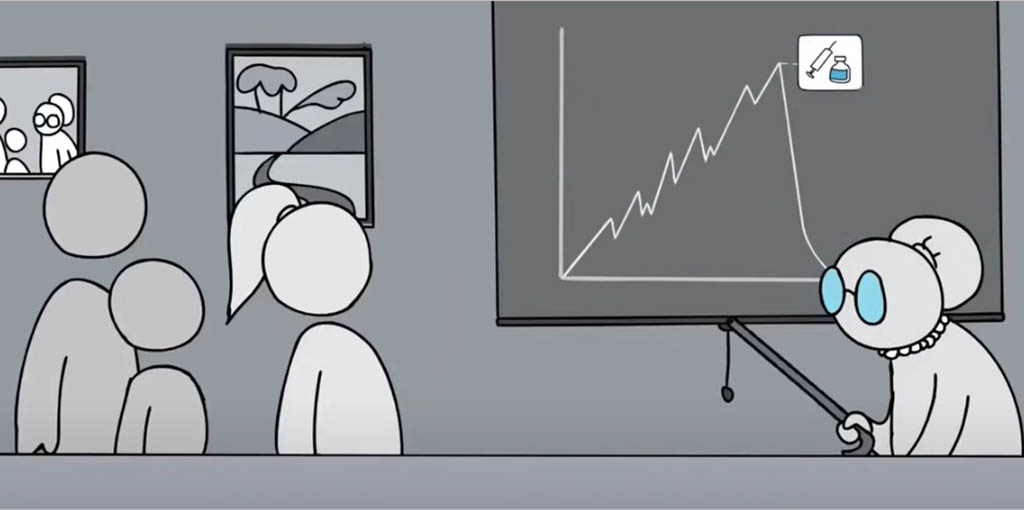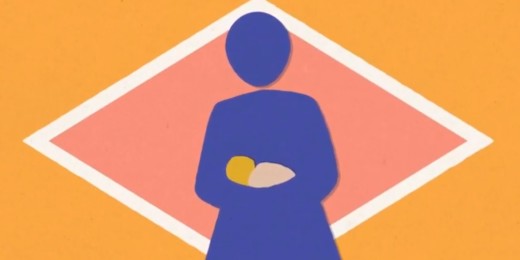A former ballerina, Maya Adam, MD, learned some valuable lessons on the stage that she is now applying in the global fight against COVID-19. She's incorporated those lessons into her six wildly popular videos that use music, animation and a bit of humor to entertain and enlighten audiences about the dreaded disease.

"As a performer, you realize that if you do not connect with your audience and take their heart into your hands, there's no way they are going to pay attention to what you have to say. Keeping that connection is something we can do in a video as well," said Adam, a clinical assistant professor of pediatrics and director of Health Media Innovation at Stanford Medicine.
Adam's short films have captured more than 8.2 million views on YouTube, Facebook and Twitter, as well as the attention of notable individuals like Tedros Adhanom Ghebreyesus, the director-general of the World Health Organization.
The videos -- including a new one that addresses vaccine hesitancy -- have been retweeted by the likes of Arianna Huffington, the social media influencer, and Jennifer Gates, the daughter of Bill and Melinda Gates. Most recently, YouTube/Google content strategist Mike Martin singled them out as "remarkable, brilliant, impactful work."
"In fact, we chose it specifically to serve as a 'best in class' inspiration and guide for other higher education institutions, so that they can see what is possible on YouTube and aspire to hit the heights your work does," Martin wrote in an email to Adam.
A fresh approach to health messaging
The videos do not take a traditional, didactic approach to education, but rather incorporate elements that entertain viewers and draw them in. Once they are hooked, she sneaks in the health message she wants to convey.
Her most recent video, "End the pandemic. Vaccines work," for example, tackles the tough issue of vaccine hesitancy. It features a grandmother, with her family, marking off the days of COVID isolation on a calendar when a health worker offering vaccines knocks at the door.
The mother screams and slams the door, but the grandmother pushes her aside to get the vaccine. She then convinces other family members to be vaccinated by explaining the value of vaccines in protecting against disease, including polio and mumps. Since it posted a month ago, it has been viewed more than 61,000 times on the Stanford Medicine YouTube channel.
Adam's most popular video, called the "Global Race: A COVID-19 Story," is about the importance of wearing masks. It has been viewed on the channel more than 3 million times. Set to the frenetic music of the "Flight of the Bumblebee" by Russian composer Nicolai Rimsky-Korsakov, the video depicts a terrified, breathless globe -- a cartoon-like character -- charging frantically up a hill, pursued by an angry orange coronavirus.
At the top of the hill, the globe meets two stick-figure caregivers who drape the globe in a mask. The empowered globe then scampers down the hill, the coronavirus lagging as the hill gradually levels out -- a clever representation of the so-called "flattening of the curve."
It helps to make the audience laugh
Like her work, Adam's career trajectory has hardly been traditional. After 10 years with a German ballet company, she was 27 when she started her undergraduate education at Stanford. She went on to medical school at the University of British Columbia and became a lecturer at the School of Medicine in 2014.
One of her early tasks was to set up a digital education outpost for Stanford in South Africa, with the goal of educating the local population about good nutrition.
"We had to create content that was portable and small and would engage people with limited literacy and bandwidth," she said. "I had to become really streamlined in what we were actually trying to communicate and make it compelling for people who couldn't read or didn't really have time to watch."
She used a similar approach in engaging learners in classes about mindful eating, healthy cooking and environmentally sustainable cooking for Stanford University's online Coursera course platform. Those classes also incorporate music and animation and have become quite popular, with some of the classes reaching enrollments of 500,000 people worldwide, she said.
"Finding creative ways to get preventive health messages to the public means that we need to meet them where they already are -- on social media and entertainment platforms -- and give them something that fills a need beyond just providing information," Adam said.
"If we want to reach hard-to-reach audiences, we need to move them, inspire them, make them laugh. Then, when we have their attention, we can more effectively deliver health messages."
Taking on COVID around the globe
Her COVID work has been so successful that Adam gets requests from educational centers around the world -- from Poland to Oman to Indonesia -- that want to make use of her material.
She has been working with the Heidelberg Institute for Global Health in Germany in testing different approaches to COVID education in large-scale clinical trials. In their first two trials involving more than 10,000 participants, the researchers found that most people were engaged enough to watch the short films almost to the end, and gained significant knowledge about COVID, as well as an intention to change their behaviors, like staying home and washing their hands, she said.
"In many cases, there was a high baseline of knowledge. People already knew quite a bit. We still saw a significant increase in knowledge. That's a very exciting finding," Adam said.
Her team has produced three videos on vaccine hesitation that incorporate humor and emotion to see what resonates most with people. They will be testing the videos in audiences in the United States and China, and plan to publish their results in an academic journal to help validate their work.
"It can be an uphill battle to get people to accept this approach to education," said Adam, who said she has had "amazing" support from School of Medicine leaders. "We believe we can get messages out in a way that is both rigorous and enjoyable."
Click here to view Maya Adam's health COVID-education videos on Stanford Medicine's YouTube playlist; and here for the link to the Global Child Health Media Initiative page.
Top image taken from the "End the pandemic: Vaccines work" video."






